Leakers and whistleblowers often shape history at the same time as polarising opinion. 
Some people see these individuals as heroes and martyrs to their cause.
Others (particularly those connected with the organizations related to the leaker’s revelations) often see them as traitors and criminals.
The whistleblower that first springs to mind for many people is Edward Snowden. His leaks regarding the USA’s National Security Agency opened the world’s eyes to the level of ongoing surveillance in place across the globe. In the process, his actions turned him into a fugitive from the US Department of Justice, currently thought to be living in exile somewhere in Russia.
But Snowden wasn’t the first (in)famous leaker, and won’t likely be the last. It’s said that whistleblowing dates right back to the seventh century when King Wihtred of Kent offered a "kickback" to anyone willing to inform on fellow citizens working illegally during the Sabbath.
A little more recently, Benjamin Franklin became "America’s first whistleblower," when he passed along confidential letters back in 1772. These letters were eventually seen by far more people than Franklin ever intended. This, in turn, set off a far-reaching chain of events that left the previously-neutral Franklin committed to American Independence.
At the time of writing, US President Trump is fighting an ongoing battle with leakers. Many believe that his "one size fits all" condemnation of leakers fails to address the fact that while some leaks compromise security and deserve condemnation, others are "salutary, (or) even vital." Since 1989, there have been federal laws in place to protect whistleblowers in the US.
Whatever your personal stance on whistleblowers, the associated stories make fascinating reading and have all made significant waves across society and politics. This "little black book" explores some more interesting and exciting leaks in modern history.
Edward Snowden
The subject of several books and documentaries, as well as a Hollywood movie bearing his name, Edward Snowden is probably the most famous whistleblower of recent times. His leaks opened the world’s eyes to just how Orwellian the modern landscape of surveillance has become. Snowden is a hero to libertarians but a traitor to those with a different mindset - just like several of the other leakers on this list.
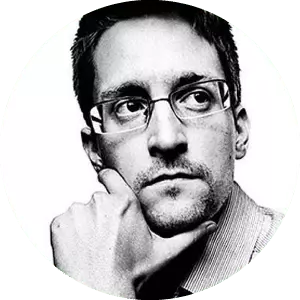
Early Years
Edward Snowden was born in 1983. Generations of his family had worked for the US government in some form, with both his father and grandfather holding positions with the American coastguard, his mother working at the Maryland District Court, and his sister employed as a lawyer in Washington’s Federal Judiciary Center.
Snowden’s grandfather, Edward Barrett, moved on from the coastguard to work with the FBI, and was stationed at the Pentagon during the September 11th terror attacks in 2001.
An individual of a prodigious intelligence, Snowden reportedly had his IQ tested more than once, with results in excess of 145 each time.
A prolonged episode of mononucleosis (mono) resulted in Snowden missing his final months of high school, which he never completed. However, he attended community college and completed the GED test, which is an alternative to completing a traditional US high school education. Some reports suggest he earned a Master’s degree in computer security in 2011, granted by the UK’s University of Liverpool, despite never completing a Bachelor's degree. However, conflicting reports suggest he didn’t actually complete those studies.
During Snowden’s late teens and early twenties, he developed a significant interest in eastern culture and studied both Japanese, and Mandarin Chinese. He was also interested in martial arts and anime, and one of his first jobs was with an anime company with a presence in the US.
Career
Snowden signed up for the US military at the age of 20 and had hopes of involvement in the Iraq war as a Special Forces operative. However, this career was short-lived when he didn’t complete the training after breaking both of his legs in an accident. The time between his enlistment and discharge was little more than four months. 
The following year, Snowden took on another short-lived role as a "security specialist" at an NSA-sponsored language research center at the University of Maryland. Reports suggest that this was Snowden’s first foray into a "top secret" American facility, and he himself referred to it as such in an interview with Wired in 2014. While the facility wasn’t officially "classified," it was apparently "heavily guarded," and Snowden had to undertake a lie-detector test and background check to work there. According to Wikipedia, Snowden held this role for "less than a year."
In 2006, Snowden attended a job fair, which resulted in him being offered a job by the CIA. He was assigned to their headquarters in Langley, VA, in the global communications division.
After being singled out as a "computer wizard" (Snowden’s own words), he spent six months being trained at a "secret" CIA school for technology experts.
Around a year after joining up with the CIA, Snowden was granted diplomatic immunity, and posted in Switzerland, where he was given a role in network security, as well as an apartment near Lake Geneva. Reports suggest Snowden was viewed as a top expert in cybersecurity, and "hand-picked” by the CIA.
Snowden would later go on to discuss some of his experiences in Switzerland, during years he described as "formative." He resigned from the CIA after three years, in February 2009.
Snowden’s next job role was as a contractor for Dell. While this might sound like quite a step down from the CIA, he was working in a similar sector, as he was assigned to Yokota airbase near Tokyo, Japan, working at a National Security Agency facility.
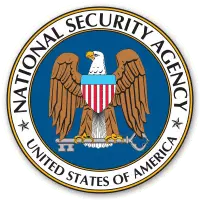
Here, he worked his way up from a technical role, upgrading NSA systems, to a position he described as "cyber strategist" on his CV. He worked in various locations, before returning to Maryland, where he’d spent much of his childhood. Still working for Dell, he began working with the CIA again as a "lead technologist." It’s widely thought that it was around this time Snowden began downloading some documents relating to government surveillance that he would go on to leak.
About a year later, Snowden was assigned to the NSA’s "information sharing office" in Hawaii. This is a facility that’s primarily thought to be involved in monitoring the communications of North Korea and China. For much of the time Snowden spent here, he remained a Dell employee, but towards the end, he was working for a consultancy firm called Booz Allen Hamilton, after quitting his role with Dell in March 2013.
Snowden has described this switch as his personal "breaking point,” which he reached when he says he witnessed James Clapper, the Director of National Intelligence, lie under oath to Congress.
Just three months later, Snowden fled the US for Hong Kong, shortly before the publication of his first leaked documents. There’s an extensive debate about what exactly was going on in the final few months of Snowden’s work within the NSA.
According to Wikipedia, Snowden defined his job as that of an "infrastructure analyst” who was there to look at ways to break into networks and telephone systems. The NSA argued that he was a mere "system administrator.” Furthermore, there have been suggestions that he exploited this role to trick fellow employees into revealing their system passwords, and inferences that he took on the position with Booz Allen Hamilton specifically to put him in a position where he could access more information to leak.
The Leaks
Before moving on to the detail of Snowden’s leaks, it’s worth looking at exactly how they came about. 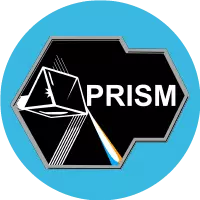
There was plenty of debate about exactly what Snowden’s role was in the latter part of his career as a government contractor (a career that earned him a reported $200,000 a year at its peak). However, there was even more disagreement regarding the attempts he claims to have made to alert people to his concerns about widespread surveillance prior to his revelations going public.
Snowden claims that he made "tremendous efforts" to raise concerns about spying programs via his colleagues and superiors, both verbally and in writing. However, the authorities only released a single email from April 2013 relating to an inquiry about "legal authorities," and claimed not to have seen anything else.
What does seem clear is that Snowden’s discomfort with the practices of the NSA and other global security agencies had been present for a significant period. In fact, a New York Times report suggested that Snowden may have been considering becoming a whistleblower as far back as when he was initially employed by the CIA and posted to Geneva.
Reports suggest that Snowden first reached out (anonymously) to Guardian journalist Glenn Greenwald in December 2012, and filmmaker Laura Poitras the following month. It’s widely believed that Snowden began leaking documents in April 2013.
It’s almost impossible to state the accurate volume of data Edward Snowden leaked. Glenn Greenwald says Snowden handed over around 10,000 documents, while NSA sources claim he "accessed" more than 200,000. There are also claims Snowden took nearly a million documents from the Department of Defence.
Regardless of the numbers, the revelations were big. They primarily related to the use of widespread citizen surveillance, and heavily implicated the USA, Australia, and Canada, as well as the United Kingdom.
Reports in June 2013, first shown in The Guardian and The Washington Post, related to PRISM, a covert system that allegedly allowed the security services access into individual Google and Yahoo accounts.
PRISM was just the start; Next followed details of systems that kept a constant eye on citizens’ telephone and internet use, spied on people playing games like Second Life and World of Warcraft, tracked cellphones, and scanned through the content of personal emails. 
It wasn’t only about what these systems could do; It was also about who they were being used against. Snowden’s revelations suggested that the security agencies were targeting charities, multinational companies and, most controversially, other countries who were supposedly allies of the US.
One of Snowden’s most memorable claims was that the systems in place made it such that he’d be able to tap into anybody’s personal business affairs with nothing more than a personal email address.
The general theme of Snowden’s revelations was that the security services were going way beyond their remit of protecting national security. Suddenly the US and the other implicated countries were in the frame for everything from full-scale espionage to using covert IT systems to spy on their love interests.
Snowden opened Pandora’s box - and a great many people were very unhappy about it.
The Aftermath
Edward Snowden essentially became a refugee as soon as he left Hawaii for Hong Kong. He initially "holed up" in the four-star Mira Hotel, before hiding from the "powers that be" in a "cramped apartment" with other refugees. 
With the help of Robert Tibbo, a Canadian human rights lawyer, Snowden is thought to have moved to the Russian Consulate, before being flown to Moscow (along with Sarah Harrison of WikiLeaks) on June 23rd, the day after the US revoked his passport.
Inferences were made at the time that the Hong Kong authorities had made it easy for Snowden to escape the country, with the authorities there saying that America’s request for his arrest wasn’t compliant with Hong Kong law. One has to wonder now if the very recent revelations that the US had been monitoring other countries’ communications reduced their desire to co-operate.
It’s not completely clear where Snowden intended to head to from Hong Kong, but it’s thought South America was the aim. However, he only got as far as Russia, where he remains to this day. His asylum there has been extended several times and is now valid until 2025. Snowden is able to live at least some kind of life there and makes money from interviews and speaking engagements.
While the European Parliament voted in 2015 to drop charges against Snowden in recognition of his status "as a whistle-blower and international human rights defender," he would face criminal charges were he ever to return to the USA. Suggestions have been made that Russia could decide to extradite Snowden to the US to "curry favor" with President Trump.
Snowden is essentially, in his own words, "trapped" in Russia. Although he is a hero to many, there are also plenty of people who regard him as a traitor. While he’s someone who’ll never be short of a lucrative speaking engagement, it seems unlikely he sleeps too soundly at night. Not when President Trump would like nothing more to see him returned to his place of birth to experience what some right-wing figures would perceive as "justice."
Julian Assange
A hacker from an early age, Julian Assange set up WikiLeaks in 2006 - a website for whistleblowers that continues to operate, and hit the headlines, to this day. WikiLeaks weaves into the stories of other whistleblowers on this list too, particularly that of Chelsea Manning. Assange attracts a wide audience whenever he speaks publicly - whether via Twitter or from the balcony of the Ecuadorian embassy in London, where he lives to this day.
![Julian Assange Julian Assange]() Early Years
Early Years
Born 12 years before Edward Snowden in 1971, Julian Assange is probably the second most high-profile whistleblower in recent years.
Assange had a distinctly "alternative" upbringing, described by Wikipedia as "nomadic." He was born in Townsville, Queensland (Australia), and went on to reportedly live in over 30 towns in the country while he was growing up. His mother Christine was a visual artist, who separated from his father, an anti-war protester, prior to his birth. She then married an actor, Richard Assange, from whom Julian took his last name. Her next relationship was with Leif Hamilton, a member of an Australian new-age cult.
Unsurprisingly, given his lack of roots, Assange was moved from school to school. He attended two Australian universities but didn’t gain a degree.
Assange got into computer hacking at the early age of 17, as part of a crew called the International Subversives. According to Wikipedia, his hacking group was involved in infiltrating the systems of several huge companies and organizations, including Lockheed Martin, Citibank, and the US Department of Defense.
Career
Unlike Edward Snowden, Julian Assange’s path to whistleblower didn’t begin with an esteemed career working for government bodies. Assange was very much a hacker from the start. 
In 1991, at the age of 20, Assange was caught in the act of hacking into telecommunications giant Nortel, via their "Melbourne master terminal." His hacking, using a dial-up modem, was discovered after his phone was tapped by Australian Federal agents. After a raid on his home, he was charged with an array of hacking offenses. It took five years for the charges to be processed, and after pleading guilty to most of them, he escaped with a small fine and a "good behavior bond."
As is often the case in the world of hacking, his computer skills were recognized and used for good. Between his arrest and eventual sentence, he worked with the Victoria Police Child Exploitation Unit.
From 1994 onwards, Assange was involved in some significant programming projects that were key to the development of the early internet. He was instrumental in launching the Suburbia Public Access Network, one of Australia’s first ISPs, and also worked on patches for PostgreSQL and NNTPCache. He remained heavily involved with the hacking community throughout this time and advised on issues relating to Internet security.
It seems apparent that Assange had an early awareness of how the online world would one day become central to whistleblowing and information leaks. He registered a domain called leaks.org back in 2009. According to Wikipedia, he "didn’t do anything with it," but in the same year, he did make efforts to bring awareness to a patent granted to the NSA for technology that would allow the authorities to harvest and transcribe telephone calls. This has a fascinating parallel with the kind of activity that Edward Snowden found himself embroiled in nearly a decade later. 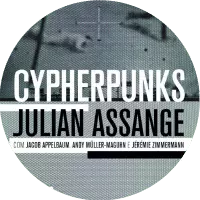
In his book, Cypherpunks, released in 2012, Assange stated that "the Internet, our greatest tool for emancipation, has been transformed into the most dangerous facilitator of totalitarianism we have ever seen.”
Five years later, at the time of writing and against a backdrop of increasing online surveillance, it’s becoming steadily harder to argue with this description.
The Leaks
Assange launched the famous WikiLeaks site in 2006, basing it in Iceland. In an interview with The Guardian in 2010, he described his role with the site as that of "Editor in Chief."
After studying at the University of Melbourne, WikiLeaks became Assange’s principal career. He traveled the world "on WikiLeaks business," presumably meeting with numerous leakers and whistleblowers.
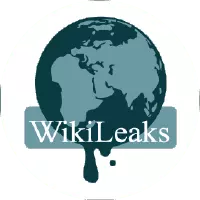
Over the years, WikiLeaks collated information relating to numerous scandals and institutional practices. Rather than leaking information himself, Assange created a platform for others to do so - and plenty of people made use of it.
The early years of WikiLeaks resulted in numerous pieces of leaked information entering the public domain. Leaks included the contents of Sarah Palin’s Yahoo! email account, details of the procedures used in the Guantanamo Bay prison camp, and a list of members of Britain’s far-right British National Party.
In 2009, WikiLeaks released a huge amount of information relating to banks, private companies, and governments. Leaks included information relating to tax avoidance by Barclay’s Bank, revelations regarding a nuclear accident in Iran, and over half a million pager messages sent on the day of the 9/11 terror attacks.
As was the case with Edward Snowden (and other famous whistleblowers discussed here), opinions on Assange ranged from "hero,” to "traitor.” (This still applies at the time of writing!) Around the same time that Assange was being awarded an Amnesty International media award, he was described as a "terrorist” by then-US Vice President Joe Biden. The Australian Prime Minister also accused him of illegal activity, though local police argued there was nothing to charge him with.
WikiLeaks truly entered the mainstream vocabulary in 2010, with the high-profile release of leaked material from Chelsea (formerly Bradley) Manning. Manning was a US soldier who released around 750,000 sensitive documents and videos relating to American military activities.
The material predominantly related to activities in Iraq and Afghanistan, and included videos of soldiers shooting 18 people in Iraq from a military helicopter, as well as footage of airstrikes in both countries. There was also material leaked relating to activities at Guantanamo Bay.
Chelsea Manning’s plight is explained in more detail below. Julian Assange’s reputation, along with that of WikiLeaks, grew massively in the wake of Manning’s leaks. Assange himself received numerous awards in the years following, including the Sam Adams award, reader’s choice "person of the year” awards from both Le Monde and Time, and "rockstar of the year,” awarded by Italian Rolling Stone.
However, the hero-worship from one demographic was equaled by the vitriol from another. In November 2010, it was confirmed that Assange was under investigation under the espionage act, starting off a chain of events that is still ongoing to this day. In April 2017, CNN heard from "US officials” that there were plans to file formal charges against him.
Meanwhile, however, WikiLeaks continues to operate, steadily publishing sets of leaked documents. At the time of writing, recent leaks include emails relating to Emmanuel Macron’s presidential campaign in France, and various leaks relating to monitoring tools used by government agencies. It’s also significant to remember that WikiLeaks was controversially involved in leaking information relating to the Clinton campaign in the run-up to the US election, a move Assange defended on the eve of the vote.
The Aftermath
In 2010, other headlines began to emerge about Julian Assange, unrelated to leaking confidential information. Two Swedish women made allegations of rape and sexual assault against him. Although Assange wasn’t formally charged, all of the alleged details were made public. Assange "absconded” whilst bailed by the UK police, pending extradition to Sweden.
While the Swedish police dropped the charges against Assange in May 2017, he is still (at the time of writing) subject to an arrest warrant in the UK for breaching his bail.
Since 2012, Assange has been living in London’s Ecuadorian Embassy, after being granted asylum status by Ecuador. He’s technically a free man, but one in risk of arrest should he decide to leave the embassy. An arrest for breaching bail in the UK could be followed by an extradition to the US, where the penalty for his WikiLeaks involvement could potentially mean a punishment "up to the death sentence,” according to Wikipedia.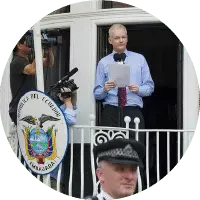
Assange is said to have a "studio apartment” in the embassy. Between 2012 and 2015, police were permanently stationed outside the embassy in case he decided to leave, something that reportedly cost nearly £13 Million.
After spending seven years in the Ecuadorian Embassy, it seems clear Assange would like to leave. There have been attempts to arrange him transit to Latin American which hasn’t come to fruition, and Assange himself attempted to persuade French President François Hollande to allow him to travel to France as a refugee, an appeal that was rejected.
Despite being "holed up” in the embassy, Assange has remained in the news, making occasional speeches from the building’s terrace. In the space of just four months in 2016, two of Assange’s lawyers died, one from an apparent suicide, and another from cancer - something that triggered various conspiracy theories.
Assange also uses his Twitter account to give his opinion on current events regularly, particularly those relating to whistleblowing. At one point he offered to hand himself over to US authorities if Chelsea Manning was granted an immediate release. While President Obama did free her shortly after, the president insisted it was not due to Assange’s involvement, saying that he didn’t "pay a lot of attention to Mr. Assange's tweets.” Assange remained in the embassy.
As with Edward Snowden, Assange is essentially confined to one place - but in his case, it’s a building rather than a country. In the approach to the 2017 elections in Ecuador, one candidate indicated that, should he be elected, he’d ask Assange to leave the embassy in London, essentially ending his asylum. The candidate, Guillermo Lasso, didn’t win the election.
However, just as political motivations could shift and affect Snowden’s status, the same applies here. When you carve out a career that has some regarding you as a hero and others a traitor, an uninterrupted night’s sleep seems like something hard to achieve.
William Mark Felt
A key figure in Washington’s famous Watergate scandal, William Mark Felt is also known as "deep throat” - one of the most legendary whistleblowers in history. Felt’s actions caused US President Nixon to resign to avoid impeachment, although decades passed between those events and the confirmation that it was Felt behind the sensational leaks.
![William Mark Felt William Mark Felt]() Early Years
Early Years
(William) Mark Felt was born in 1913. His whistleblowing didn’t involve computers and was therefore rather more low-tech than that carried out by Snowden and Assange - but certainly no less impactful!
Felt had a traditional upbringing after being born in Idaho in 1913. He was the son of a builder and carpenter, Mark Felt, from whom he took his middle name. He attended school in the region and graduated High School in 1931. In 1935 he was awarded a BA from the University of Idaho.
After completing his education, Felt moved straight into working in political circles, starting off in the office of US Senator James Pope, a job for which he moved to Washington DC. A few years later, in 1938, he married Audrey Robinson, also from his home state, after meeting her during his studies at Idaho University. She also moved to Washington for her career, starting a job at the Bureau of Internal Revenue.
Whilst working at the Senator’s office, both for James Pope and his successor, David Worth Clark, Felt attended night school at the George Washington University Law School. Five years after completing his Bachelor's degree, he completed his law degree and passed the bar for the District of Columbia one year later.
Career
After completing his law studies, William Mark Felt started work with the Federal Trade Commission. However, he did not enjoy the work, and only remained at the department for one year. In November 1941 he applied to join the FBI. His application was successful, and he started there in 1942. 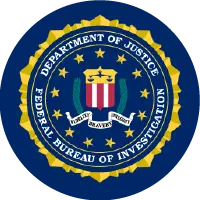
Felt’s work with the FBI caused him to travel extensively across the USA, something he indicated he didn’t enjoy, once stating that J. Edgar Hoover "had no idea of the financial and personal hardship involved” in such transfers, because he had no family of his own.
Felt trained for the FBI in Washington and Virginia. He then had three postings in Texas. After a spell back at FBI headquarters, he then had further FBI postings in Seattle, New Orleans, and Los Angeles.
In 1956, Felt was moved yet again, this time to Salt Lake City, Utah. However, this particular move came with a significant promotion to the role of "Special Agent in Charge.” Felt’s "patch” included Nevada, which led him to be involved in some of America’s first organized crime organizations. These particularly related to gangster activities in casinos in Las Vegas, and Felt’s investigations indirectly compelled J. Edgar Hoover to acknowledge that organized crime actually was a significant problem in the US.
After returning to Washington DC in 1962, Felt began to rapidly move up the FBI ranks. By 1964 he was Assistant Director of the Bureau, and by 1971 he became Deputy Associate Director.
Felt’s "boss” at this time was Associate Director Clyde Tolson, described by Wikipedia as Hoover’s "right-hand man.” As Tolson was experiencing poor health, Felt was given considerable responsibility, and a book written by Ronald Kessler about that time suggests that Felt inspired confidence in Hoover because he was "tactful with him and tough on agents.”
Hoover died in 1972, and Felt was a pallbearer at his funeral. Clyde Tolson resigned from the FBI the next day, resulting in Felt becoming "second in command,” under L. Patrick Gray III, Tolson’s replacement. For the next few years, both Gray and Felt would be controversial figures within the government, with both questioned over how Hoover’s private files were handled after his death. Gray, Felt’s new boss, was also frequently absent from work due to travel and illness, leading to Felt frequently being left "in charge” of the bureau. 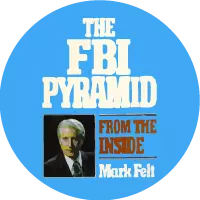
Felt’s position in the FBI also meant he was in prime position to see all communications relating to the Watergate scandal (more on that below.) Before long, other individuals identified Felt as a suspect in leaking information relating to Watergate. However, there was no proof of this and he held onto his job.
Despite this, when the time came to replace Gray as Director of the FBI in 1973, President Nixon "passed over” Felt, despite him seeming like a shoo-in for the role, in favor of William Ruckelshaus, someone Nixon regarded as a "Mr. Clean.”
Felt didn’t get on well with Ruckelshaus, who continued to accuse him of leaking insider information to the press (quite correctly, as it now turns out!) After just a couple of months of working under Ruckelshaus, Felt resigned from the agency on June 22nd, 1973.
Although Felt resigned from the FBI in 1973, he ended up in court in 1980 relating to FBI activities that took place "on his watch.” These included secret break-ins on premises connected to left-wing groups. Felt stood up for and admitted the activities he’d had a part in, and former president Nixon even appeared as a defense witness.
Felt was found guilty of conducting searches without warrants and fined $5000, despite the prospect of a significant custodial sentence. Felt appealed, and a year later he was pardoned by President Reagan.
Felt kept busy in retirement, publishing memoirs about his time at the FBI. Over the years, speculation was rife that Felt was, in fact, the famous Watergate informant known as "Deep Throat.” It could be said that Felt’s denials of the fact became less emphatic as time went on. By 2005 he admitted that he was, in fact, the informant. The fact was made available via his lawyer and published in Vanity Fair. A few years later, in 2008, felt died at the age of 95.
The Leaks
Watergate was a long and involved political scandal, and a full description of it is far beyond the scope of this eBook. This timeline-based primer from CNN provides a good overview, however. 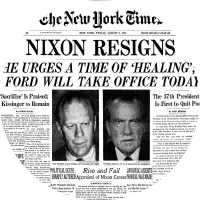
Essentially, the Watergate scandal caused President Nixon to resign before he was impeached. Watergate began with a break-in at the Democratic National Committee Headquarters. Within four months, the New York Times had reported that the FBI believed people working for the president were directly responsible, something a tape recording revealed to be the case a week before Nixon’s resignation.
From a very early stage, it was apparent that someone was leaking information relating to the scandal, with "stories (appearing in the press) lifted almost verbatim” from real-life events.
As we now know, Washington Post reporters, Carl Bernstein and Bob Woodward were being fed a steady flow of information from an informant called "Deep Throat,” who we now know to have been William Mark Felt. One book about the events described Felt as an "incurable gossip,” and there has been much speculation about the real motive behind his whistleblowing. While Felt’s family and others believe patriotism was behind his actions, others point to disillusionment with his job after being passed over for promotion, especially after the death of J. Edgar Hoover. 
Felt’s leaks allowed the American public to follow the progress of the Watergate scandal. The press involvement ensured nothing could be brushed under the carpet, with "media scrutiny” ensuring that leads were followed, right until they reached the highest echelons of government. It’s reasonable to argue that Nixon’s forced resignation would quite possibly have been avoided in the absence of Felt’s leaks.
The Aftermath
By the time William Mark Felt was revealed as "Deep Throat,” Watergate was a subject for the history books, and many of the details were the stuff of urban myth. 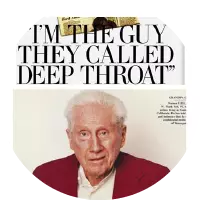
For example, there are various theories relating to how the Washington Post reporters arranged meetings with Felt, involving flags on balconies and coded symbols in newspapers. Most of these myths have since been discredited or written off as unrealistic.
When Felt’s identity was confirmed in 2005, it seems there was too much water under the bridge for anything beyond the discussion of his drives and motivations. Already aged over 90, ill health was taking over. However, he was able to sell movie rights to his story. (A movie starring Liam Neeson was released in 2017).
To this day, nobody truly knows whether Felt was someone who felt truly outraged by the Watergate scandal or someone who was more driven by a desire for a promotion or a sense of being "wronged” by his employer. That speculation will no doubt continue for years to come, and continue to be the subject of books and movies.
Chelsea (Bradley) Manning
A controversial figure with a complicated personal life, Chelsea Manning made huge waves in the US military after exposing details about the country’s wars in both Iraq and Afghanistan. Manning’s story ties into that of Julian Assange, as she used WikiLeaks as the platform to share her story. Manning’s actions divide opinion to this day; Former President Barack Obama commuted her prison sentence, but the current president, Donald Trump, describes her as an "ungrateful traitor.”
![Chelsea Bradley Manning Chelsea Bradley Manning]() Early Years
Early Years
Bradley Manning was born in Oklahoma in 1987. His father was Brian Manning, an American who had served in the US Navy as an intelligence analyst. His mother was Susan Fox, who was born in Wales, and the couple met while Brian was stationed there.
Details of Manning’s difficult childhood emerged during his court-martial hearing. Manning’s sister revealed a history of alcoholism in the family. Allegedly, Bradley’s mother drank alcohol throughout her pregnancy, leading Manning to show signs of fetal alcohol syndrome after birth. The sister, Casey, was "principal caregiver” in Manning’s early years, according to Wikipedia.
There’s little doubt that Manning’s early childhood was deprived and turbulent. According to reports, Manning was only fed baby food and milk up until two years old and was "largely left to fend for himself” in latter years.
Manning’s mother was a troubled soul. She attempted suicide in 1998, and there are reports of self-harm, specifically after Brian Manning divorced her in 2000 and remarried. A year later, Susan Fox moved to Wales with Bradley, and Bradley attended a school in Haverford West.
Bradley Manning struggled with sexual identity from a young age. A childhood friend said that Bradley revealed to him that he was gay at the age of 13, however, Bradley was not openly "out” at school. Reports suggest Bradley was bullied for being "effeminate” whilst at school in Wales.
Gender Reassignment
By 2005, Bradley was living as an openly gay man; In 2009 he began to consider gender reassignment; In 2013, Bradley took on the name of Chelsea, and formally requested hormone therapy and the use of the feminine pronoun. 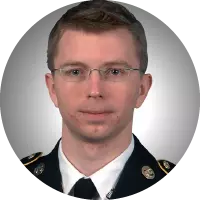
While this request was legally granted in April 2014, a series of legal wrangles took place over hormone therapy while Chelsea was in prison. At the time of writing, although Chelsea received some transitionary hormone therapy while incarcerated, she’s been unable to receive the surgery that was signed off in 2016, because she is no longer covered under the military health care plan that was in place when the surgery was authorized.
(For the reasons detailed above, Chelsea is referred to by her preferred gender pronoun for the remainder of this piece).
Chelsea Manning moved back to the USA in 2005 and lived back in Oklahoma with her father, his new wife and their new child. Capitalizing on an aptitude for computers that Chelsea had shown throughout school, she landed a job as a software developer. However, interpersonal issues led to this job only lasting for four months.
The following year, after a row with her stepmother to which police were called, Manning left her father’s home in a truck he gifted to her. She traveled to Tulsa, then Chicago, then Maryland, where she lived for 15 months with her auntie, briefly studying at a community college in Montgomery.
Career
After reported persuasion from her father, Chelsea Manning joined the US Army in September 2007, hoping to make use of the GI Bill to work towards a college education and possibly a PhD. 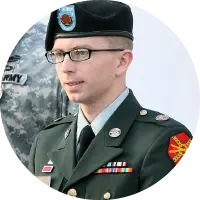
Press reports suggest that Manning had an incredibly hard time in her early days in the army - bullied due to her size, manner and sexuality. She was nearly discharged after just six weeks, but this decision was overturned, and she completed basic training in April 2008.
Presumably, due to her aptitude for technology, Manning was then assigned to Fort Huachuca for training as an Intelligence Analyst. It’s thought that her level of security clearance for this role gave Manning access to a considerable amount of confidential information.
After completing her training (and receiving a National Defence Service Medal and Army Service Ribbon), Manning was sent to New York to train for a posting in Iraq. She was deployed to Baghdad in October 2009 to work in Intelligence Communications. Reports suggest that Manning’s volatile temperament caused some to have doubts over her deployment, but a shortage of qualified personnel meant that it proceeded. In November of that year, Manning was promoted to specialist rank. Her role meant that she had direct access to confidential systems, including the Joint Worldwide Intelligence Communications System (JWICS).
Around the time when Manning began work in this post in Iraq, WikiLeaks posted a huge collection of pager messages from the day of the September 11th terror attacks. It’s unclear whether this was a motivating factor, but just four months later, in January 2010, Manning began to take steps to download information from American systems in order to leak it.
The Leaks
The first information Manning took from the systems she had access to comprised 40,000 documents, now known as "The Iraq War Logs,” and 91,000 documents now known as "The Afghan War Logs.” 
In order to remove the information, she took steps to hide it, including storing it on a CD labeled "Lady Gaga,” and copying it to an SD memory card so she could store it in her digital camera while she was on leave.
It’s unclear whether Manning’s primary intention was to go to WikiLeaks with the information because it appears she first contacted both The New York Times and The Washington Post within the information, but to no avail. A text file added to the documents stated that the information was "one of the most significant documents of our time - removing the fog of war and revealing the true nature of 21st century asymmetric warfare.”
Manning returned to Iraq in February 2010. By this point she has used the Tor network to send the documents to WikiLeaks, but had no confirmation that they had been received. A week after returning to Iraq she sent an additional diplomatic cable to WikiLeaks, which the site published almost immediately. A few days later, she forwarded the controversial "Collateral murder” video clip of a Baghdad helicopter attack.
It’s thought (but not been confirmed) that Manning’s contact at WikiLeaks during this time was Julian Assange himself. On April 10th, 2010, Manning uploaded a further 250,000 diplomatic cables to WikiLeaks.

Around this time, Manning’s long-running struggle with her sexual identity returned to the fore. According to Wikipedia, Manning had hoped that the "masculine environment” of the forces would help with her gender issues. However, in late April 2010, she sent a photo to a supervisor, in which she was dressed as a woman. It seems that little was done to help Manning, despite a day where she was found curled up in a cupboard with a knife, and physically attacked a fellow intelligence analyst. She was demoted and her weapon was withdrawn, but it seems that no psychological help was offered.
It also seems that, around this time, Manning began reaching out to various people in an attempt to expose herself as the person leaking information to WikiLeaks. These people included Jonathan Odell, a gay writer, and Eric Schmiedl, a mathematician from Boston. She then got in touch with Adrian Lamo, a convicted hacker who had appeared in Wired magazine. This set off a chain of events that would lead to Manning’s arrest less than a week later.
The Aftermath
Chelsea Manning "alluded” to her whistleblowing to WikiLeaks within less than 20 minutes of talking to hacker Adrian Lamo via AOL Instant Messenger.
She openly discussed the leaks with Lamo, and admitted her dealings with Assange. Lamo initially said that she could treat the discussions as "a confession or an interview (never to be published),” and Manning, in turn, told him that the information she leaked regarded "crazy, almost criminal political back dealings.”
Lamo again reassured Manning that none of their conversation was "for print,” which presumably made her comfortable enough to discuss things openly. She said that she was in need of "moral and emotional support,” and that she hoped that her actions would hopefully trigger "worldwide discussion, debates, and reforms.”
Unfortunately for Manning, Lamo wasn’t true to his word. After seeking the advice of friends, one of them, Timothy Webster, contacted the Criminal Investigation Command department of the army. Within four days of establishing chat contact with Manning, Lamo had met with the FBI and handed over the logs. He also gave the story to Wired magazine.
Manning was arrested, charged, and imprisoned in Kuwait, where she was placed on suicide watch. In July that year, she was moved to the Marine Corps Base in Quantico, Virginia as a "maximum custody” detainee with "Prevention of Injury” status, which placed considerable restrictions on when she was allowed to sleep and what items she was allowed access to.
In the months that followed, a series of events and altercations led to Manning being moved on and off full "suicide watch” status. Both Amnesty International and the United Nations made appeals as to Manning’s treatment. In April 2011, Manning was moved to a medium security prison in Kansas.
Manning’s trial started on 3rd June 2013. The charges included espionage and theft. Manning pleaded guilty to several of the charges, saying that she intended her actions to "show the true cost of war.”

As a result of Manning’s guilty pleas, the court case moved quickly onto sentencing. Right from the start, the judge promised to subtract 112 days from her sentence due to the traumatic events that occurred during Manning’s time on remand in Virginia.
Manning also apologized for the "unintended consequences of (her) actions,” and was supported by a psychologist and psychiatrist who both proffered explanations for her actions. Mitigating circumstances, including details of Manning’s chaotic childhood, were also discussed.
Despite these efforts, and Manning’s guilty pleas, she was sentenced to 35 years in the United States Disciplinary Barracks in Kansas.
Chelsea Manning was actually released from prison on May 17th, 2017. After various appeals and requests for release, President Obama agreed to "commute” her sentence, describing it as "very disproportionate” compared to that issued to other whistleblowers. Two months later, Manning tweeted that she’s "not in the army,” though it’s unclear if she was dishonorably discharged.
Perhaps unsurprisingly, President Trump is at odds with Obama about the commutation of Manning’s sentence. He’s referred to her as an "ungrateful traitor” who should "never have been released.”
So once again we see the polarisation that occurs when people leak information; While some say "traitor” others think "hero.” In the specific case of Chelsea Manning, it’s hard to see that she was ever anything worse than a troubled soul with the right intentions. But plenty of people would never agree with that point.
Daniel Ellsberg
Like Chelsea Manning, Daniel Ellsberg blew the whistle on the actions of America in a wartime scenario, this time regarding the war in Vietnam. Despite being tried in court, Ellsberg emerged a free man, and continues to support anti-war efforts and encourage whistleblowing. In recent years, Ellsberg has been a vocal supporter of both Edward Snowden and Chelsea Manning.
![Daniel Ellsberg Daniel Ellsberg]() Early Years
Early Years
Daniel Ellsberg was born in Illinois and raised in Detroit. He was a talented pianist, but stopped playing at the age of 15 when he experienced a family tragedy. He lost both his mother and sister in a fatal car accident after his father fell asleep at the wheel.
Ellsberg was successful in academia after earning a scholarship to Harvard. He graduated in economics in 1952. He then attended Cambridge University on a fellowship for one year, before attending graduate school back in Harvard prior to joining the US Marines in 1954.
Ellsberg returned once again to Harvard as a Junior Fellow in 1957, and later earned a PhD in economics there in 1962. His dissertation, which was about how decisions are made "under conditions of uncertainty or ambiguity” was a groundbreaking piece of work that came to be known as the Ellsberg Paradox. Not only did this form the basis of discourse that was studied in the decades to follow, it also likely seems to have contributed to his later decision to leak information.
Career
After enlisting with the Marines in 1954, Ellsberg quickly experienced success in his military career. He worked as a platoon leader and company commander, and was a first lieutenant by the time of his discharge three years later, just before he returned to Harvard. 
Ellsberg’s next job was with RAND Corporation, a non-profit organization that’s still in operation to this day. The company researches and advises the US Armed Forces, as well as various other government bodies. Ellsberg’s role with RAND was that of a nuclear strategic analyst.
After completing his PhD in 1962, Elsberg moved to The Pentagon, working as an assistant to the Assistant Secretary of Defense for International Security Affairs. He then spent two years working for the State Department in South Vietnam. On his return, he took another role with RAND. It was the work he carried out on this assignment that would lead to him turning into a whistleblower. Defense Secretary McNamara requested a study of some confidential papers relating to America’s conduct in the Vietnam War. The study and the papers concerned would soon become known as The Pentagon Papers.
It’s not clear whether it was his work on this project that directly led to Ellsberg leaking information, but the following year he started to attend anti-war protests. At one of these events, Ellsberg witnessed a speech by Randy Kehler, a draft resister (someone who refused to comply with military conscription).
In the speech, Kehler spoke of his willingness to be incarcerated rather than involved in what he saw to be an "unjust war.” Ellsberg later said that it was this stance that inspired him to copy and leak the Pentagon Papers, saying that "if (he) hadn't met Randy Kehler it wouldn't have occurred to (him).”
The Leaks
The main thrust of the Pentagon Papers was the revelation that the US government very quickly gained an understanding that the Vietnam war was unwinnable. The papers suggested the administration was hiding this key fact from the Senate and the American public. 
This was 1969, and Ellsberg didn’t have things like Tor and Instant Messaging. His first step towards whistleblowing involved photocopying the Pentagon Papers documents.
It would be a couple of years before Ellsberg’s revelations appeared in the media. It seems that Ellsberg was initially more keen to make them visible to the Senate. According to Wikipedia, Ellberg approached various senators with this aim, including J. William Fulbright and George McGovern. Ellsberg was also keen to meet the people who’d inspired him to break confidentiality with the government, including the draft resister Randy Kehler, mentioned above.
The first big leak from the 7000 papers Ellsberg copied was published in The Times on 13th June 1971. The following day, the US Attorney General ordered the media outlet not to print any more of the information.
This began two chains of events. Firstly, Ellsberg released the information to "17 more newspapers in rapid succession.” Secondly, The Times fought the instruction not to publish further leaks, something that called the very freedom of the press and the First Amendment into question. The battle lasted just over two weeks, but on June 30th, the Supreme Court lifted the temporary gagging order and ruled that the newspaper could continue publication.
The Aftermath
In the time following the Supreme Court case, the government pursued two strategies against Daniel Ellsberg.
The administration had become instantly aware of the implications of the leaks. White House Chief of Staff H.R. Haldeman is quoted referring to Donald Rumsfeld saying that the revelations suggested that "you can't trust the government” and that "you can't believe what they say.”
After the failed attempt to gag The Times, The first strategy seems to have had the objective of discrediting Ellsberg. A few months after the initial publication of the documents, there was a break-in at the office of Ellsberg’s psychiatrist's office - now described as a "covert operation.” However, attempts to discredit Ellsberg based on his mental state failed, when his file didn’t reveal anything untoward.
Unsurprisingly, there was also an attempt to punish Ellsberg via legal channels. Towards the end of the Supreme Court battle, which ended with The Times being allowed to publish the remaining papers, Ellsberg had admitted his guilt, saying the following:
"I felt that as an American citizen, as a responsible citizen, I could no longer cooperate in concealing this information from the American public. I did this clearly at my own jeopardy and I am prepared to answer to all the consequences of this decision.”
The trial didn’t take place until 1973, and Ellsberg’s initial strategy was to argue that the classification of the documents themselves was illegal, and intended to hide information from the public, rather than from the enemy. This argument was dismissed, leaving Ellsberg unable to argue his defense.
However, in court, the attempt to discredit Ellsberg came to the surface. Coupled with additional evidence that Ellsberg had been illegally wiretapped, this resulted in the charges being dismissed. (Ironically, as a result of the break-in at the psychiatrist's office, several connected government officials lost their jobs, and later earned convictions for involvement in the Watergate scandal, also discussed earlier).
Ellsberg was, therefore, a free man.
Since the scandal, Ellsberg has remained at the forefront of the whistleblowing community and been involved in various political activism campaigns. His views have led to his arrest during protests on more than one occasion. He has emphasized since his trial that "the public is lied to everyday by the President, by his spokespeople (and) by his officers.” 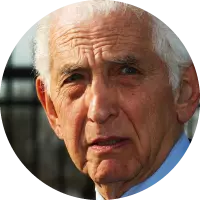
Initiatives Ellsberg has been involved in include protests regarding George Bush’s role in the Iraq war, and against the detention of whistleblower Chelsea Manning. Ellsberg has been a vocal supporter of other whistleblowers, including Manning, Edward Snowden and Sibel Edmonds. He’s also spoken in favor of websites and technologies that support leakers, including the Tor anonymity network and WikiLeaks. He has been awarded the Gandhi Peace Award for Promoting Enduring Peace, amongst other accolades.
At the age of 86 (at the time of writing), Ellsberg is someone who continues to stick rigidly to his principles. The next leaker covered here, peace activist Mordechai Vanunu, is another strongly supported by Ellsberg, who describes him as "the preeminent hero of the nuclear era.”
Mordechai Vanunu
Mordechai Vanunu whistleblowing regarding Israel’s nuclear program made the headlines in The Sunday Times. His capture and detention involved an elaborate honeytrap operation that wouldn’t feel out of place in a blockbuster espionage movie. While several of our whistleblowers now face restrictions on their movement, Vananu’s actions appear to continue to affect his daily life more than most.
![Mordechai Vanunu Mordechai Vanunu]() Early Years
Early Years
Born in Marrakesh in 1954, Mordechai Vanunu (also known as John Crossman), was the second of a huge group of siblings. He lived with no less than 10 brothers and sisters in the city’s Jewish quarter.
When Vaununu was eight years old, anti-semitism was rife in Morocco. His family fled to a camp in France where they spent a month, before traveling by boat to settle in Beersheba, Israel. Vanunu’s father, Shlomo, set up a grocery store in the town, having previously owned one back in Morocco. His father also studied the Jewish religion, and was seen as a rabbi for the local area.
Vanunu went to a "religious elementary school” in the town, before being moved, for a short time, to a Jewish Yeshiva school. His parents then moved him to Yeshivat Ohel Shlomo high school, a Zionist institution. Vanunu later said that it was during his time at this school that he decided to "cut (himself) off from the Jewish religion.” He completed his schooling with a "partial matriculation” and briefly worked at a court as an archivist.
Conscription led to Vanunu joining the Israel Defense Forces in 1971. After failing the exam to become a pilot, he became a soldier in the Combat Engineering Corps. Within a couple of years, he worked up the ranks to the position of Sergeant-Major.
After serving in the Yom Kippur War in 1973, Vanunu was offered a permanent role as a soldier a year later. He declined, and after being honorably discharged completed his school matriculation by studying at a university in Tel Aviv. After this he enrolled on a physics course at the university, but dropped out after failing first-year exams. Reports suggest that he struggled to balance studying with the need to work full-time to pay for it.
Career
After leaving university, Vanunu headed back to Beersheba. There he worked in a "series of odd jobs,” according to his Wikipedia entry.
After failing to secure a job he applied for with the Israeli security services, Vanunu applied to Negev Nuclear Research Center, a facility that devised and built nuclear weapons. The recruitment process was grueling and involved interviews, health checks, and extensive training. Once taken on, Vanunu was required to sign secrecy agreements, and agree not to travel to any Communist or Arab countries. A year after starting, he took on a Shift Manager role. 
In parallel to his career at the nuclear facility, Vananu restarted his academic studies at Ben-Gurion University of the Negev, Beersheba, where he studied economics and Greek philosophy.
In 1980, Vananu embarked on the first of several overseas trips and went backpacking in Europe. The places he visited included London, Germany, The Netherlands, Scandinavia and the Greek Islands. A few years later, he traveled for three months around the USA and Canada, connecting via Shannon Airport in Ireland. This trip came close to landing him in trouble with his employer, who only allowed employees to take direct flights to the USA to protect from the risk of hijacking. However, no disciplinary action was taken against Vananu at this point.
From around 1982, Vananu started to become vocal about his political views. When he was drafted to the Lebanon war in 1982, he refused to work in the field and worked in the kitchens instead. A couple of years later, he befriended a number of Arab students at university, and was involved in a left-wing group called "Campus,” and another called the "Movement for the Advancement of Peace.” According to The Jerusalem Post, Vananu was viewed as a "radical.” During this time his views were seen as becoming increasingly "pro Arab” and "anti-Jewish.”
His political attitudes were noticed at work also, and he was spoken to several times regarding his views.
1985 was a big year for Mordechai Vanunu. He graduated from university, with a degree in philosophy and geography. According to reports, he also joined Israel’s Communist Party around this time. He was also laid off from his job, alongside many other workers. He was granted a brief reprieve after a labor union managed to oppose his dismissal successfully, but then resigned later that year, earning a redundancy package and severance pay.
It was between Vananu’s original lay-off and subsequent resignation that he secretly took photographs inside the Negev Nuclear Research Center. These would form the basis of Vananu’s later whistleblowing, and the events that followed.
The Leaks
Vananu continued his global travels after leaving his job at the research center. He traveled around Israel with his American girlfriend initially and then ventured further afield, visiting Greece, Thailand, Burma, Mandalay, and Nepal. After looking into traveling around the Soviet Union, he instead headed to Australia, where he acquired a taxi license and settled in 1986. 
The photographs Vananu took, along with his knowledge of work at the facility, shed light on Israel’s nuclear strategy and abilities. Once the information was analyzed, it suggested Israel had produced enough plutonium to build "about 150 nuclear weapons.”
It was a Colombian journalist called Oscar Guerrero who reportedly persuaded Vananu to leak his information. Vananu met him in Australia, and Guerrero suggested he could make up to $1 Million from the story. Guerrero put The Sunday Times in touch with Vananu. They interviewed him and then set about fact-checking the story. Vananu traveled to London to meet with them, and the newspaper arranged his accommodation.
It’s alleged that prior to Vananu traveling to London, he was effectively double-crossed by Oscar Guerrero. Guerrero is believed to have contacted the Israeli consulate, offering to help them catch a "traitor.” This set in motion a chain of events that would lead to Vananu’s eventual capture. Vananu’s brother in Beersheba was questioned by Israel’s security service, Shin Bet, on 7th September 1986 - three days before Vananu actually traveled to the UK and revealed the photographs and full story to the press.
It seems clear that Vananu knew the authorities were on his tail. He moved location several times while his story was prepared for publication. Meanwhile, The Sunday Times provided Israel with the opportunity to give their side of the story, which meant Israel had the chance to see some photographs Vananu shared, in breach of his non-disclosure agreement. While this was happening, Oscar Guerrero continued his apparent quest to profit as much as possible from the story by approaching The Sunday Mirror and selling the story to them.
While it was a covert operation, and one designed not to upset the diplomatic relationship between the UK and Israel, it’s clear the latter was set on capturing Vananu and returning him to Israel. Within a couple of months, the Israeli government was successful in this aim. But before the country admitted to Vananu’s capture, The Sunday Times went ahead and printed his story, which concluded that Israel had manufactured over 100 nuclear warheads.
The Aftermath
It was a classic "honey trap” operation that delivered Vananu to the Israeli authorities. A female Israeli agent, Cheryl Bentov, seduced him and arranged to travel with him to Italy. However, this was a ruse to capture Vananu. In a plot worthy of a James Bond film, involving intercepted communications and a covert merchant ship, Vananu was drugged on arrival in Italy. He was then transported to Israel by sea, after being moved onto a smaller boat off the coast of Israel. By November, Israel made public the fact that they had detained Vananu.
Vananu’s case went to trial on August 30th, 1987. He faced a raft of charges including collecting classified information, treason and aggravated espionage. In the run-up to the trial, Vananu allegedly went on a hunger strike and also lodged several rejected appeals.
After an eventful and controversial trial, Vavanu was sentenced to 18 years imprisonment, including the time "served” since he was abducted from Italy. The details of the trial were embargoed for many years, with "censored extracts” published in 1999.
In 1989, Vananu appealed his sentence in the Supreme Court. This was rejected, as was another appeal for "better prison conditions.” Vananu reportedly spent over 11 years of his prison time in solitary confinement. During his time in prison, Vananu also attempted to revoke his own Israeli citizenship.
Although Vananu was released from prison in 2004, he has remained effectively "confined” to this day and lives in Jerusalem’s St George’s Cathedral. He has numerous court-enforced restrictions on his behavior, the most significant of which is that he’s not allowed to leave Israel, or to go within 550 yards of any airport or border crossing. 
In Vananu’s lengthy Wikipedia entry, there are numerous details of requests for an end to the restrictions he faces on his movement. Vananu has also applied for asylum in Norway and Sweden - applications that have, to date, been blocked. Since his initial release, he has been arrested on numerous occasions for violations of his release conditions. He served additional time in prison in 2010.
The Wikipedia section relating to Vananu’s "Awards and honors” is nearly as long as the section detailing all of his dealings with the police since his 2004 release. He has received numerous nominations for the Nobel Peace Prize, and awards including the LennonOno Grant for Peace, the 2010 Carl von Ossietzky Medal, issued by the International League for Human Rights, and a commendation from the Teach Peace Foundation. Amnesty International also stepped in in 2010, stating their intention to declare him a "prisoner of conscience” if he was detained again.
However, at the time of writing, it seems Vananu is still far from free. He is currently serving a suspended sentence, and requests for a lifting of his restrictions continue to be denied. Vananu is no doubt seen as a hero by the peacekeeping community, but it seems clear that there are plenty of people who continue to regard him with a polar opposite regard.
Coleen Rowley
While Coleen Rowley’s name isn’t as well-known as that of Snowden or Assange, Rowley is a significant recent whistleblower. Many would argue that the information she leaked implied that the 9/11 attacks in New York could have been prevented, or at least reduced in severity. Rowley remains a committed activist to this day and was awarded a "person of the year” award by Time magazine back in 2002.
![Coleen Rowley Coleen Rowley]() Early Years
Early Years
Compared to some of the other whistleblowers discussed here, Coleen Rowley’s early life was traditional and straightforward. She was born in 1954 on a US military base in Virginia, and grew up in New Hampton, Iowa along with four siblings. Her family is described as "close-knit,” and Rowley herself is said to have been a "strong-willed, academically gifted perfectionist from an early age.”
Reports suggest that Rowley was keen to work for the security services from a young age, after being a fan of spy shows such as The Man from U.N.C.L.E. At the time, an FBI leaflet apparently stated that there was "no such thing” as a female FBI agent.
After graduating valedictorian from her high school in 1973, Rowley went to Wartburg College in Waverly, Iowa, where she was allegedly turned down for a scholarship because she hadn’t decided on her future plans upon graduation. After earning an honor’s degree in French, she went on to study law and passed the bar in Iowa in 1980.
Career
After passing the bar in 1980, Rowley realized her childhood dream the following year when she joined the FBI as a Special Agent. She worked in the Mississippi region for the first few years, before being transferred to a field office in New York. There, she specialized in organized crime. She also went on field assignments in Paris, Montreal and elsewhere.
Her next posting was the FBI’s field office in Minneapolis, where she worked as Chief Division Counsel. She taught law to officers and agents, and was in charge of a series of government programs, including Freedom of Information, community outreach, and asset forfeiture. 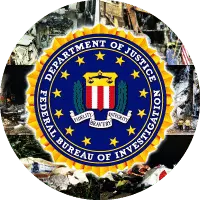
The Minneapolis field office of the FBI was later involved in investigating suspected terrorist Zacarias Moussaoui. At the time of writing, Moussaoui is serving six life sentences without parole for having a role in the September 11th World Trade Center terror attacks.
It’s unclear whether Moussaoui was intended to be the so-called "20th hijacker,” but he had already been arrested in Minneapolis and questioned over such terror plots prior to the events of 9/11, after flags were raised over him attending flight training courses.
Colleen Rowley’s whistleblowing was essentially all about how the FBI seemingly failed to respond to the information gleaned from the investigation into Moussaoui in Minneapolis adequately. Along with other agents, she said she was "frustrated” by how information was handled and felt that America had left itself vulnerable to a "suicide hijacking.”
Following her retirement from the FBI in 2004, Rowley ran for the House of Representatives under the banner of the Minnesota Democratic-Farmer-Labor Party. After struggling to raise funds for her campaign, she was beaten by John Kline, the incumbent Republican candidate.
The Leaks
Coleen Rowley’s controversial "leak” centers around a 13-page memo - a memo that she prepared before appearing before a congressional committee in the aftermath of the attacks.
The most damning issue was the fact that the FBI in Minneapolis had been denied a warrant to search Zacarias Moussaoui’s computer’s while they had him in custody. Rowley stated in her memo that they "could have gotten lucky and uncovered one or two more of the terrorists in flight training,” and that there was "at least some chance that (they could have) limited the Sept. 11th attacks and the resulting loss of life.” 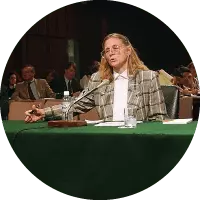
Aware of what she was potentially saying, Rowley added a request for federal whistleblower protection to the end of her memo.
Copies of the memo were handed to two members of the Senate Intelligence Committee, and another to Robert Mueller, the head of the FBI. The memo was leaked to the media.
Rowley later testified to the 9/11 Commission, accusing the agency of "lapses - due to its internal organization, and mishandling of information related to the attacks.” Time magazine later said that she "forced the FBI and the Administration to confront their failures directly and publicly.”
A year after the commission’s investigation, Rowley further criticized the FBI, saying in an open letter that "the bureau is not prepared to deal with new terrorist strikes.” A couple of months later, she gave up her position in the legal department and served briefly as a Special Agent once again before retiring in 2004.
The Aftermath
Thanks to the fact Rowley’s revelations were made relatively openly, she’s not paying a price for her whistleblowing, nor being regarded as a traitor. She was awarded Time magazine’s "person of the year” award in 2002, as well as the Sam Adams award for her "integrity and ethics.” 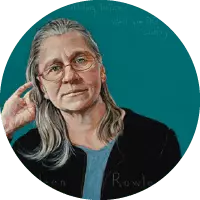
At the time of writing, Coleen Rowley is a writer, blogger, and activist. She undertakes speaking engagements and has lectured several times back at her university. She currently lives in Minnesota with her husband and has four children.
Mark Whitacre
Mark Whitacre’s whistleblowing centered on the corporate world, rather than the world of government and military. His revelations about price-fixing in the animal feed industry exposed a cartel that spanned the globe. Whitacre’s story is particularly interesting, as his whistleblowing coincided with him being exposed personally for fraud and embezzlement.
![Mark Whitacre Mark Whitacre]() Early Years
Early Years
Mark Whitacre was born in 1957. He grew up in a small village called Morrow in Warren County. He married his "high school sweetheart,” Ginger Gilbert, in 1979, and they have three children.
Whitacre attended Ohio University, where he completed bachelor's and Master’s degrees. He also holds a PhD in Nutritional Biochemistry, which he earned at Cornell University in 1983.
After graduating, he took a role as a scientist with Ralston Purina, a pet food company that’s since been acquired by Nestlé, and is now known as Nestlé Purina PetCare.
Career
After working for Ralston Purina, Mark Whitacre worked in the role of Vice President of Digussa, a specialty chemicals company.
After five years he moved to The Archer Daniels Midland Company (ADM), where he was initially recruited as the President of the BioProducts Division. ADM is an enormous food processing company, with over 30,000 employees and revenue of over $60 Billion, according to Wikipedia. Within three years, Whitacre was made Corporate Vice President of the company, in addition to maintaining his original role. 
It was during Whitacre’s time at ADM that he became an FBI informant and whistleblower, with regard to a huge price-fixing scandal.
Whitacre was fired when his role as a whistleblower was revealed. He then worked for Future Health Technologies (latterly Biomar International) until 1998, when he was imprisoned for fraud, as discussed below.
At the time of writing, Mark Whitacre is Chief Operating Officer at Cypress Systems Inc a biotech firm heavily involved in cancer research.
The Leaks
Mark Whitacre is described online as the "highest level executive of a Fortune 500 company in US history to turn whistleblower.” His story has been the subject of a book and a 2009 movie starring Matt Damon.
The scandal Whitacre was embroiled in involved a huge price-fixing conspiracy around the cost of lysine, a widely used additive for animal feed. It’s suggested that it was Whitacre’s wife who put him on the path towards whistleblowing, after she stated she would inform the FBI of what was going on if he didn’t. 
Five companies were involved in the price-fixing cartel, including ADM, and others in Japan and Korea.
Whitacre worked directly with the FBI to collect information that would eventually lead to the breakup of the cartel, along with the successful prosecution of the company, which paid a record-breaking $100 Million fine. Thanks to class-action suits and follow-up cases in other countries, the total ADM had to pay out was considerably more, with one class-action alone costing $400 Million. In addition, several top ADM executives were sent to federal prison.
Ironically, it transpired that Whitacre was involved in criminal activity of his own, something he eventually confessed to his FBI contacts. He admitted to being involved in money laundering, embezzlement, and kickbacks. Some of this criminal activity took place at the same time as Whitacre was working as an FBI informant.
Whitacre pleaded guilty, and was convicted for tax evasion, fraud, and embezzlement of just under $10 Million. He was sentenced to ten and a half years in prison - considerably longer than the sentence dished out to those he informed on - and served eight and a half of those years.
The Aftermath
The scandal of Whitacre’s own conviction went some way to overshadowing his work as a corporate whistleblower, even though some officials had done their best to see his sentence reduced.
A book called "The Informant” by Kurt Eichenwald, which was later adapted into a film, presented Whitacre as someone who became increasingly mentally unstable as the situation unfolded. The writer also stated that he felt Whitacre’s sentence for fraud was "excessive,” especially given his level of cooperation with the price-fixing case. 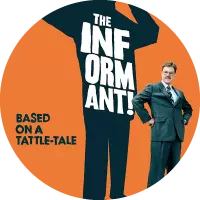
Unsurprisingly, there has been speculation that ADM had some part to play in the severity of Whitacre’s sentence. One theory is that he was reported to the FBI only because it was discovered he was working as an informant. Attorney James B. Lieber, who wrote a book on the subject, ponders where the government "will obtain the next Mark Whitacre after potential whistleblowers observe how Whitacre was treated.”
Many people have spoken out against Whitacre’s conviction and subsequent sentence. The FBI supervisor who managed the price-fixing case said that "Whitacre's fraud case was minuscule as compared to the ADM case,” going on to describe him as a "national hero.” There were also many attempts to pardon him after his conviction.
However, whether being referred to as a "national hero” is adequate recompense for over eight years in federal prison is a question that only Mark Whitacre himself could answer.
Jeffrey Wigand
Jeffrey Wigand’s leaks about the activities of "big tobacco” opened the world’s eyes to the true dark side of corporate America. Since openly leaking information about practices he objected to, he has remained true to his cause. He continues to work with organizations that dissuade children from the use of tobacco.
![Jeffrey Wigand Jeffrey Wigand]() Early Years
Early Years
One of five children, Jeffrey Wigand was born in New York City in 1942. His father worked as a mechanical engineer, and his family has been described as "devoutly Catholic,” with his parents said to be "strict disciplinarians.”
During Wigand’s teenage years, the family moved out of the inner city to upstate New York. Their new home was Pleasant Valley, near Poughkeepsie, where Wigand would go on to study at Dutchess Community College. During this time he also worked as a part-time nurse in a nearby hospital.
After just a year at college, Wigand dropped out, a move his brother described as a "rebellion to get away.” Wigand joined the US Air Force, and was originally stationed in Misawa, Japan. He also spent a short time in Vietnam in 1963, but was not involved in active fighting there.
Wigand returned to education after his time in the forces. He attended the University of Buffalo, where he gained a Master’s and PhD in biochemistry.
Wigand showed an aptitude for physical exercise and martial arts throughout his early life. Whilst at community college he headed up the cross country team, and during his time in Japan, he was awarded a black belt in judo. He subsequently met his wife at a judo class while studying at university. They would later divorce when she returned to the US alone while Wigand was working overseas.
Career
Following his postgraduate studies, Wigand worked in a variety of roles in the healthcare industry. He worked for Boehringer Mannheim Corporation, Pfizer and Union Carbide. The latter role saw him back in Japan where he worked putting medical equipment through clinical trials. 
Wigand moved back to the USA in the early 80s and took a role with Johnson and Johnson (as a side note, his second wife was a sales rep for the company). He then became Senior Vice President at Technicon, and President of Biosonics, a smaller company making medical equipment.
In 1989, Wigand took the job of Vice President of Research and Development at Brown & Williamson, a company manufacturing tobacco products. According to Wikipedia, the company worked on the "development of reduced-harm cigarettes.”
It was Wigand’s work at Brown and Williamson that would lead to him becoming a high-profile whistleblower. He was sacked from the company in 1993, something he says happened because he was aware of, and objected to, the fact that "executives knowingly approved the addition of additives to their cigarettes that were known to be carcinogenic and/or addictive.” The additives included coumarin and ammonia.
After leaving Brown and Williamson, Wigand took a substantial pay cut and became a teacher of science and the Japanese language. To this day, he still works in education in various lecturing capacities and works with Smoke-Free Kids Inc, an organization he founded that works with young people to dissuade them from smoking and alert them to the dangers.
The Leaks
Nowadays, the dangers of cigarettes are widely known, as are the number of additives manufacturers can use to improve flavor and increase their addictive properties.
The truly impressive thing about Jeffrey Wigand’s work as a whistleblower is that it’s fair to argue that it was his actions that were the catalyst to this kind of information becoming public knowledge.
After being fired in 1993, he took the decision to leak information the following year, when he worked for CBS as a consultant on a story about "fire safe” cigarettes. A year later, driven by how he felt about the industry's "lies about the health risks of cigarettes,” he went truly public and gave a deposition in a Mississippi court case against cigarette companies. 
His evidence was damning. He said that tobacco companies "manipulated nicotine content,” and "lied about the addictive properties of nicotine.” He also suggested that rather than working to develop safer cigarettes, the cigarette firms actually "suppressed” those efforts.
His evidence was sufficiently controversial to feature in The Wall Street Journal, and he later agreed to an interview on 60 Minutes, where he publicly repeated his allegations.
The Aftermath
It’s difficult to view Jeffrey Wigand’s whistleblowing as anything other than altruistic and heroic, and his subsequent work with Smoke-Free Kids Inc proves him to be a true believer in his cause.
Two years after he appeared on CBS, he was an expert witness in a court case that would result in The Master Settlement Agreement, a historic ruling that resulted in tobacco companies paying billions of dollars towards treating smoking-related illnesses. His story would later form the plot of The Insider, a biographical film where Wigand was played by Russell Crowe. 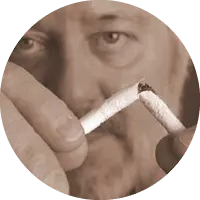
Jeffrey Wigand has also been recognized for his work with the awarding of three honorary degrees, including a PhD from Connecticut College and an Honorary MD from the Medical Society of Nova Scotia.
However, as is always the way, Wigand didn’t please everyone with his leaks. Unsurprisingly his former paymasters in the tobacco industry didn’t take kindly to his whistleblowing. Wigand has spoken of harassment and death threats and has at times had to go into hiding and even take on the services of a bodyguard. It’s also said that the stresses in the aftermath of his revelations caused him to abuse alcohol - with various related incidents receiving publicity due to a "smear campaign.”
As with all of our whistleblowers, Wigand’s actions came with notable personal sacrifice. Somewhat modestly, he is quoted as saying that he merely "did what was right… (has) no regrets and would do it again.”
Wigand continues to lecture globally on tobacco-related issues, and lives with his wife in Mount Pleasant, Michigan.
Disclaimer
This eBook has been put together as a respectful tribute to all the whistleblowers named above. Care has been taken to fact-check their stories, with the majority of information taken from Wikipedia (and the sources referenced within), as well as Biography.com. These are complex stories, so if you see any inaccuracies, please don’t hesitate to contact us so we can put them right.

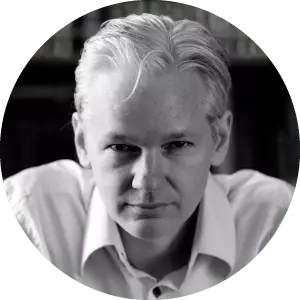 Early Years
Early Years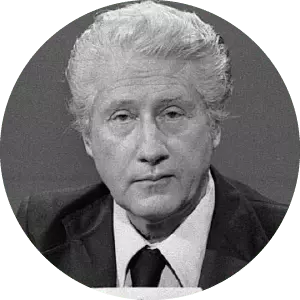 Early Years
Early Years Early Years
Early Years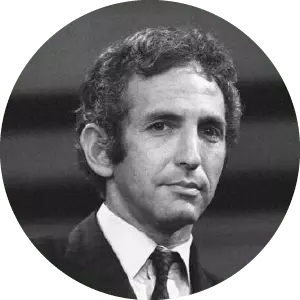 Early Years
Early Years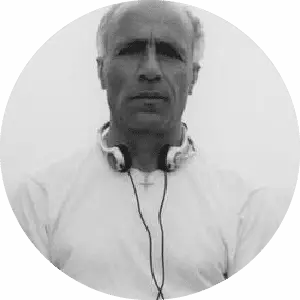 Early Years
Early Years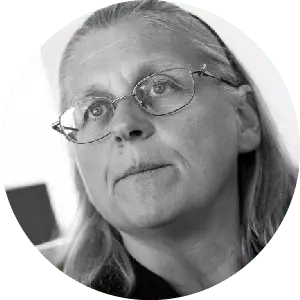 Early Years
Early Years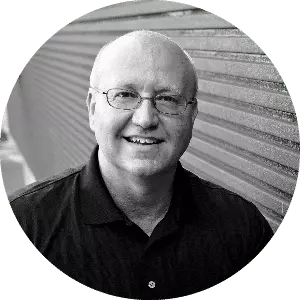 Early Years
Early Years Early Years
Early Years